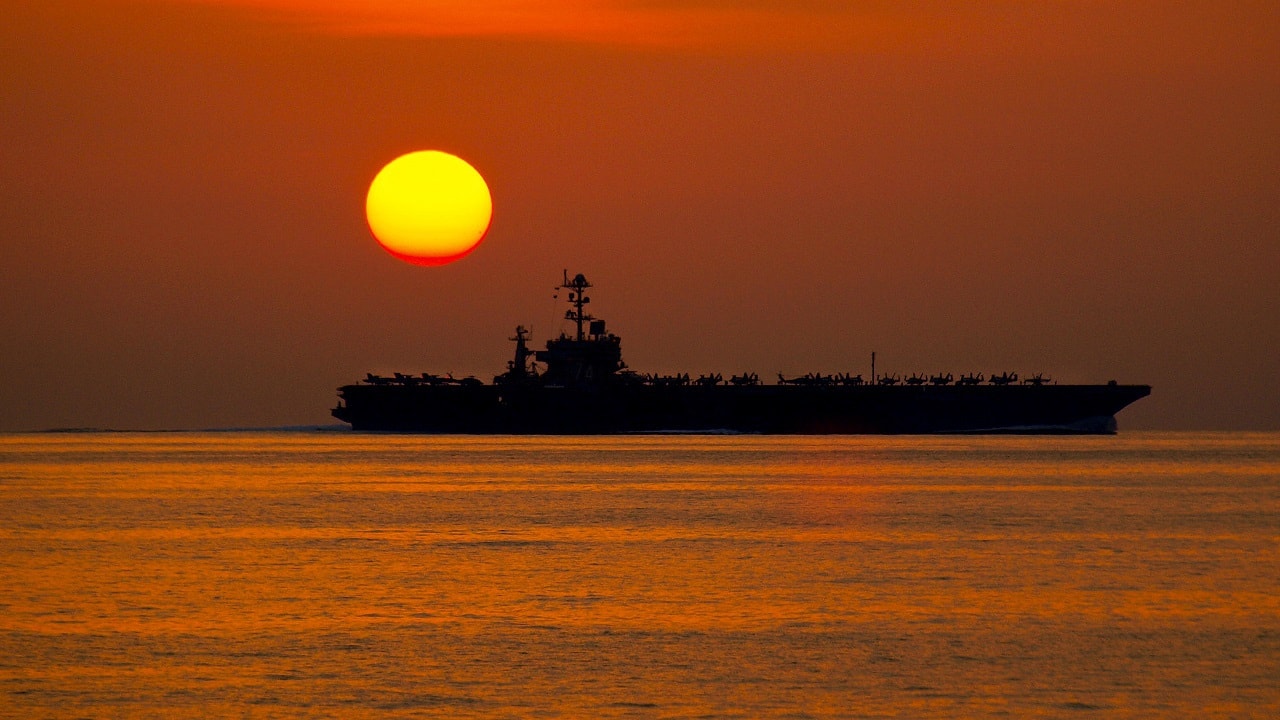The U.S. Navy’s Next Problem: China’s Nuclear Powered Aircraft Carrier
China's Ambitious Naval Expansion Plans

China’s People’s Liberation Army Navy (PLAN) is rapidly advancing its aircraft carrier program. The PLAN is moving from traditional ski-ramp designs to more sophisticated Catapult Assisted Take-Off But Arrested Landing (CATOBAR) carriers, exemplified by the Type 003 Fujian. This shift marks a significant evolution in China’s naval capabilities, as the nation sets its sights on developing nuclear-powered carriers, specifically the future Type 006. This ambitious initiative aims to challenge the dominance of the U.S. Navy’s nuclear fleet and reshape the security dynamics in the Pacific.
China’s Nuclear Aircraft Carrier Aspirations
The Type 003 CNS Fujian is a pivotal development for the PLAN. It is the first CATOBAR carrier in the fleet, moving away from the ski-ramp design used in its predecessors, the CNS Liaoning and CNS Shandong. The ski-ramp design simplifies carrier operations but limits the aircraft’s payload and range. The introduction of a catapult system allows for greater flexibility in mission planning and enhances the operational capabilities of carrier-based aircraft.
The PLAN’s next logical step is to develop a nuclear-powered carrier. Nuclear propulsion offers numerous advantages, including the ability to sustain longer deployments without the need for frequent refueling. This capability would eliminate the logistical burden of maintaining a fleet of diesel oil tankers, which are essential for traditional carriers. The nuclear reactor would not only power the catapult but also provide sustained energy for the carrier’s operations.
China’s timeline for its carrier program is ambitious. The CNS Fujian is currently undergoing sea trials, with expectations for full operational status by August. Following this, the PLAN plans to launch the Type 004, which is projected to be larger and more capable than the Fujian. Construction of a fifth carrier, likely designated Type 005, is expected to begin shortly after the Type 004’s launch. If all goes according to plan, the PLAN could have three CATOBAR carriers operational in the Western Pacific by the end of the decade, significantly enhancing its naval power.
Shipping’s nuclear option in the move towards net zero: Is it viable?
Navigating the Challenges of Nuclear Propulsion
Developing a nuclear reactor for aircraft carriers is a complex task. The PLAN is currently working on its reactor at a facility in Leshan, Sichuan province. This project, known as the Longwei or Dragon Might Project, is a top priority for the Chinese military. The successful development of a nuclear-powered carrier would elevate China to the ranks of first-class naval powers, alongside the United States and France.
However, the journey to a functional nuclear carrier is fraught with challenges. Previous attempts by other nations, such as France, to adapt submarine reactor designs for carrier use have faced significant hurdles. The specific performance requirements for a carrier’s reactor differ from those of a submarine, making the design process critical. The PLAN’s reactor development must avoid the pitfalls encountered by others to ensure success.
If the PLAN can successfully integrate a nuclear propulsion system into its carrier fleet, it will not only enhance its military capabilities but also bolster national pride. For China’s leadership, this development symbolizes prestige and a commitment to becoming a leading global power. As the PLAN continues to innovate and expand, the implications for regional security and naval balance will be profound, potentially altering the dynamics in the Pacific by the end of the decade.
